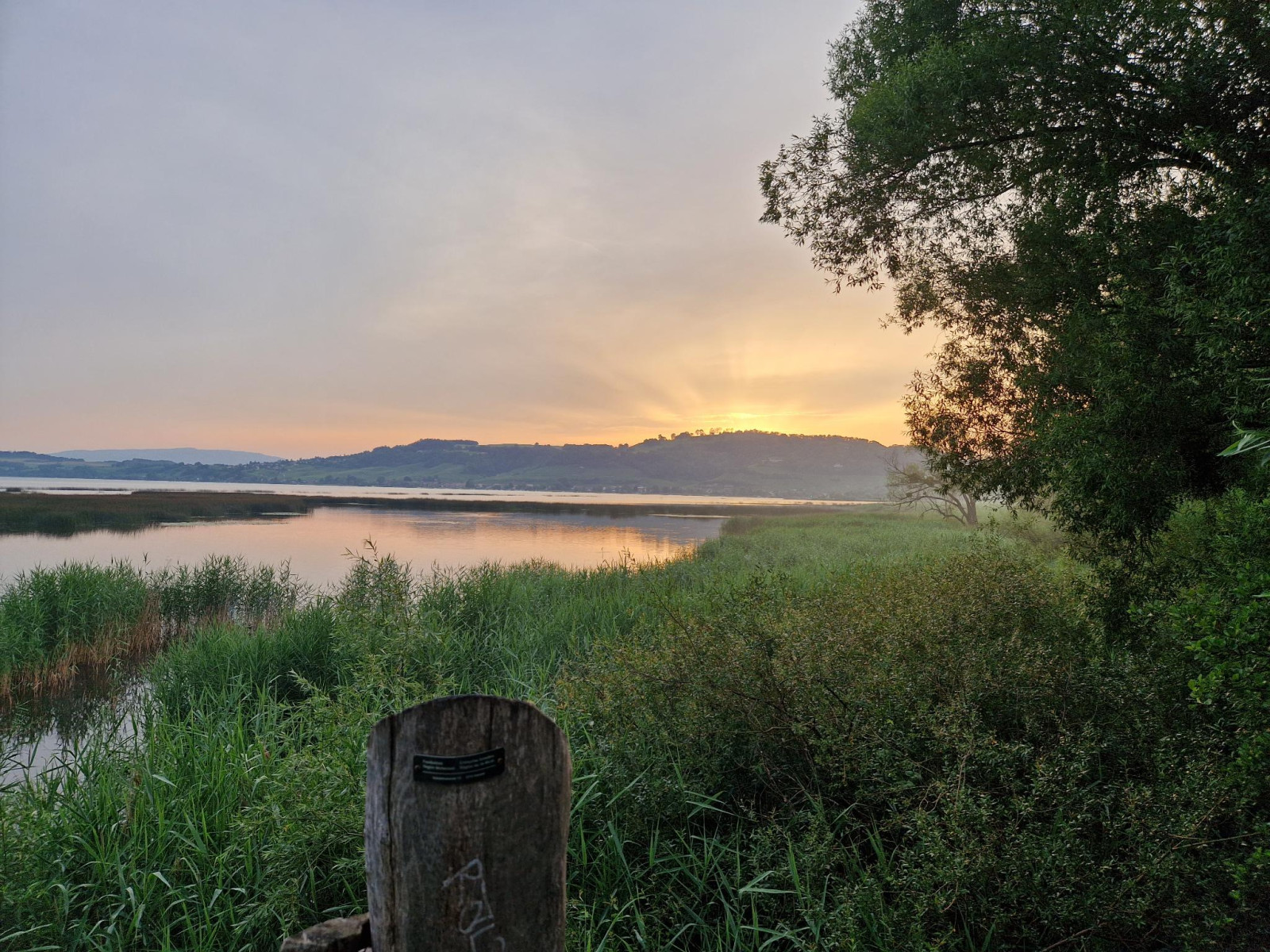Descrizione
The Chablais lies between the prominent and ornithologically interesting Mont Vully and the small Löwenberg on the northern shore of Lake Murten. The deciduous forest there is only a hundred years old. It was created by artificially lowering the water level at the end of the 19th century. A wide reedbed extends into the lake, which can be partially observed from platforms.
The beautiful footpath lends itself to practising bird song identification: The view of the reedbed and the lake is often obscured, from where Cannareccione, Salciaiola, and Cannaiola call. Rigogolo, Beccafico, and Usignolo sing in the high treetops and thickets. Picchio rosso minore, Picchio rosso mezzano, and Picchio nero also breed here. A view from the platforms is not only rewarded with spectacular sunsets. Porciglione, Martin pescatore and, with a bit of luck, Tarabusino can also be seen. Sterna comune, which breed on the artificial raft at the northern end of the area, often fly past.
In future, it may also be possible to observe the Falco pescatore more often, which is to be reintroduced to the Central Plateau. Cigno selvatico, Mestolone, Fischione, and Beccaccino are not uncommon winter visitors. Finally, among the rarities observed here are the Moretta grigia, Moretta dal collare, Falco cuculo, Beccofrusone, Pesciaiola, and Frullino.
Dettagli
Accesso
The Le Chablais area can be reached by train either from Sugiez in the north or Muntelier-Löwenberg in the south. If you are coming from Sugiez, it is worth going first to the quay of the Canal de la Broye and looking to the left at the breeding platforms of the Sterna comune. The path through the area that is closest to the water and from which you can reach the observation platforms can only be explored on foot (a cycle path runs parallel to it). Numerous information boards along the way explain the natural area.
Terreno e habitat
Foresta , Zona umida , Canneti , LagoCaratteristiche dell’area
Terreno pianoPercorso ad anello
NoÈ utile un cannocchiale?
Può essere utileBuona stagione per il BW
Tutto l'annoMiglior periodo per visitare
PrimaveraPercorso
Strada sterrataGrado di difficoltà del percorso a piedi
FacileModalità di accesso
A piediCapanno/torretta di osservazione
SiInformazioni aggiuntive
Many mosquitoes breed here at the corresponding times of year. There are fewer of them on the platforms, but it is definitely advisable to take mosquito spray with you on the way.





